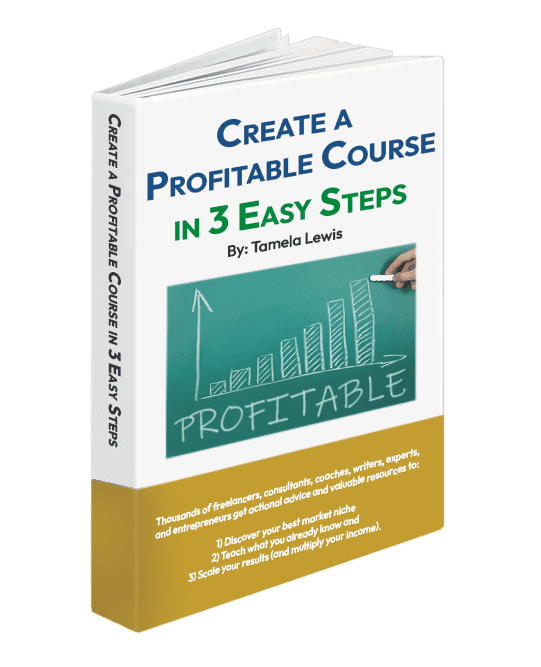CAREER CHANGE AT 40: 4 Famous Case Studies to Show You How
Making a career change at 40 can be intimidating, but it doesn’t have to be. With the right attitude and support, you can make a successful transition to a new field. First, understand the reasons why you’re making the change. Are you bored, burned out, or are you looking for a new challenge? Are there better opportunities in another field? Knowing your motivations will help you to focus on making the right decision. Next, do your research. Research the job market in your new field, and talk to people who are already working in it.
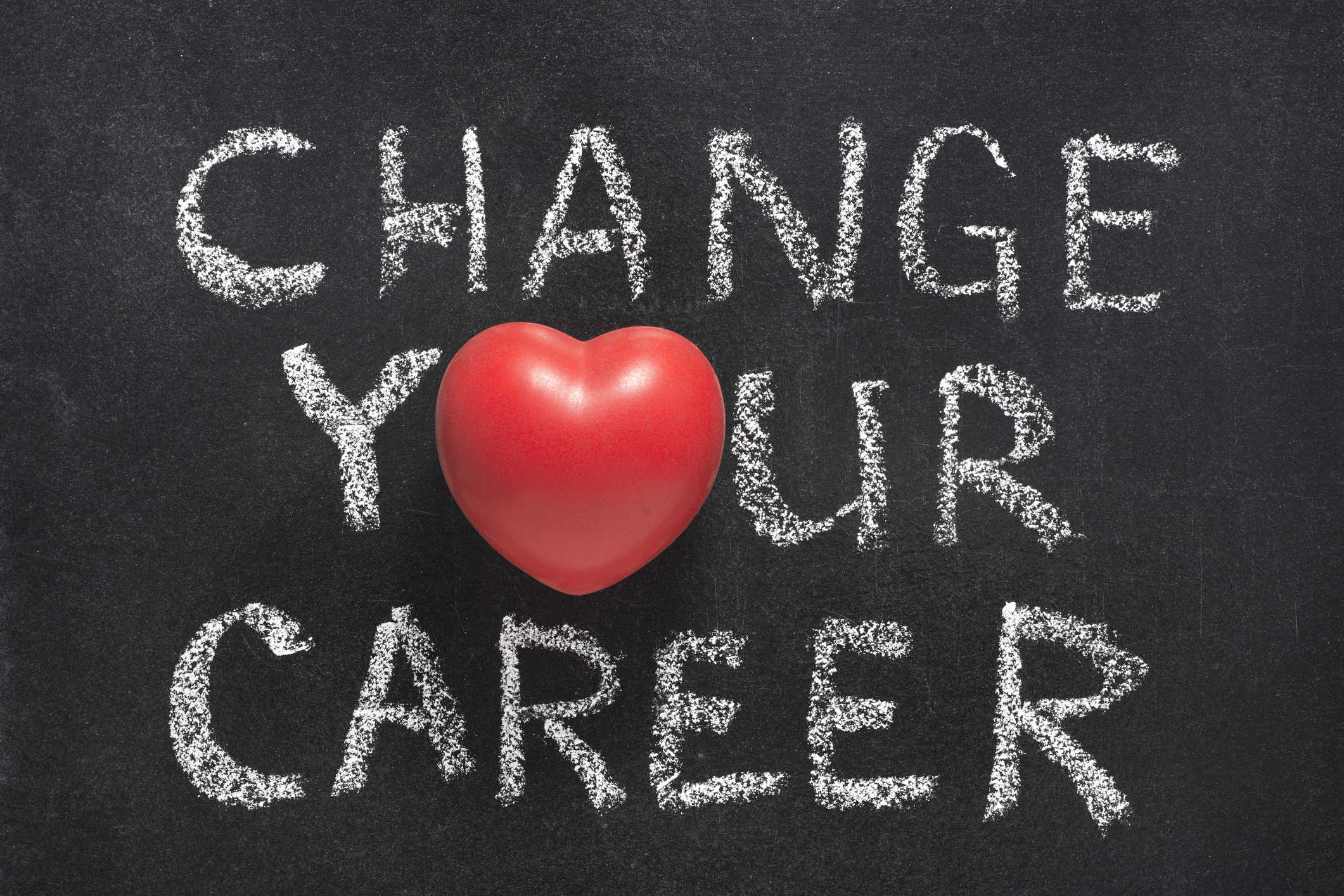 Find out what qualifications and experience you need. This will help you to decide if a career change is the right choice for you. When you’re ready to take the plunge, create a plan. Make sure you’ve got a way to support yourself financially while you make the transition.
Find out what qualifications and experience you need. This will help you to decide if a career change is the right choice for you. When you’re ready to take the plunge, create a plan. Make sure you’ve got a way to support yourself financially while you make the transition.
Consider retraining, and look for ways to gain experience in the new field. Finally, don’t be afraid to ask for help. Talk to people who have made a similar career change or who work in the field you’re interested in. Ask for advice, and look for mentors who can give you guidance.
A career change at 40 can be your biggest career opportunity to go on to something bigger than your first. Use the Science of Fit (your best career fit with your best environment) to make a smart transition. Sometimes that is done by using completely different skills. Sometimes it’s done by using the same skills in a different way.
Let’s meet a few famous case studies of people who started a new career at 40:
1. Dr. Conan Doyle’s Second Career Was Bigger Than His First
Sherlock Holmes, the most famous fictional character of all time, was coming alive from void pages. It was London, in 1887. With his medical practice failing, Dr. Arthur Conan Doyle, then 28, a London physician, morphed his analytical talents into writing detective stories rather than diagnosing medical ailments. But it wasn’t until his forties that he really came into his own.
Sherlock’s creator had been plunged—forced into–changing his niche, in spite of his extensive years of school and experience. But Dr. Doyle’s Niche Change was simply a pivot—using his same talents in a different venue, his fame and fortune skyrocketed. Dr. Arthur Conan Doyle’s darkest hour became his finest.
He went from a failing practice to his work being part of the 10 most translated literary works of all time [1], a museum at Westminster being built, England honoring his created character, and Sherlock’s adventures being made into in books, plays, television shows and movies which continue to pay dividends for the heirs 120 years later [2].
His Second Career Changed an Industry
 Sherlock Holmes created a revolution—not just a personal one for his creator, but also a global one for the science of discovery. Following Sherlock and Watson’s lead, forensic science was born [3].
Sherlock Holmes created a revolution—not just a personal one for his creator, but also a global one for the science of discovery. Following Sherlock and Watson’s lead, forensic science was born [3].
In the early days of crime-fighting, investigators were totally dependent on informers. To get valuable information out of suspects, they would hit them over the head with rubber pipes to make them confess [3].
But with Sherlock, Out was Pipe Pummeling and In was Pipe Smoking.
Sherlock told Watson, “It is quite a three-pipe problem, and I beg that you won’t speak to me for fifty minutes” [4]. While he smoked, he pondered the evidence.
He used science, reason, data, and facts to solve crimes.
And he used his medical analytical background to do it. The same skill is differently applied.
And the results were a second career much bigger than his first career.
2. Ray Kroc’s Second Career (after 40) was Bigger than His First
Ray Kroc, the founder of McDonald’s, simply sold milkshake machines. But, at age 54, when he visited the hamburger joint of the McDonald brothers, he recognized a good thing when he saw it. And he had enough of a vision to see where things were headed.
The country was becoming more mobile. Why not expand what the McDonald brothers were doing to all over the U.S.? But the McDonald brothers didn’t want the work, the cost, or the risk. (If you grow your business, there are usually all three involved). They were doing well.
But Ray Kroc had a bigger vision and he made it happen, making his second career much bigger than his first–a career he started in later life.
3. Julia Child’s Second Career (after 40) Was Bigger Than Her First
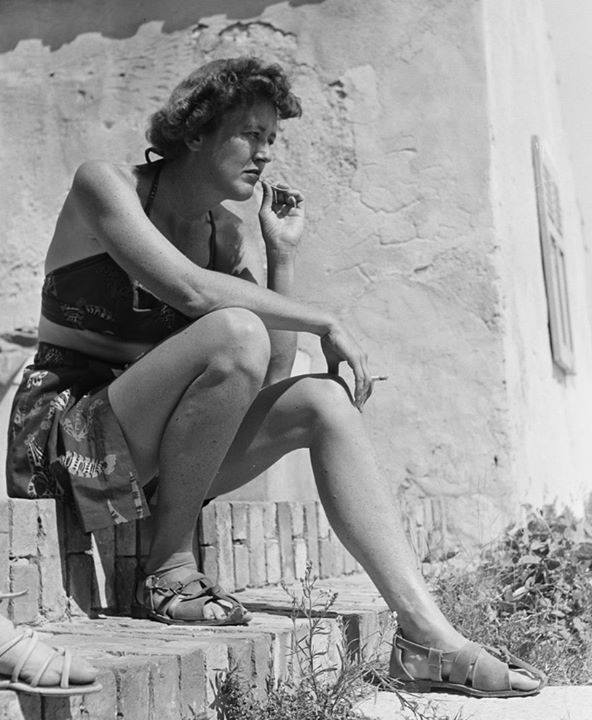 Though Julia Child’s second career may not have been any less important than her first one, she certainly became more well-known during her second career. Ironically, being famous in her first career could have cost her her life. In her first career, she was a WWII spy.
Though Julia Child’s second career may not have been any less important than her first one, she certainly became more well-known during her second career. Ironically, being famous in her first career could have cost her her life. In her first career, she was a WWII spy.
And in that capacity, she showed early signs of having the “touch” for mixing things up. Her first big recipe was a shark repellant that she mixed in a bathtub for the Navy. Sharks kept unintentionally setting off underwater explosives meant for German U-boats. Her inventive “recipe” took care of that problem. (She described it in a later interview as her first major recipe. [5] )
Oddly enough, her intelligence work actually led her to discover her passion for food by way of her husband, fellow spy Paul Child.
Biographer Noël Riley Fitch says that Child’s intelligence work actually helped create the future celebrity chef. The OSS introduced her to Paul and he introduced her the joy of “real” cooking. A California upbringing had tricked her into thinking that meals came from cans and freezers. Working in China opened her eyes.
“American food in China was terrible; we thought it was cooked by grease monkeys,” Childs wrote. “The Chinese food was wonderful, and we ate out as often as we could. That is when I became interested in food. I just loved Chinese food.” [5]
Child’s true culinary epiphany came later when the couple moved to France.
She Was Ordinary Because She Hadn’t Discovered Her Purpose
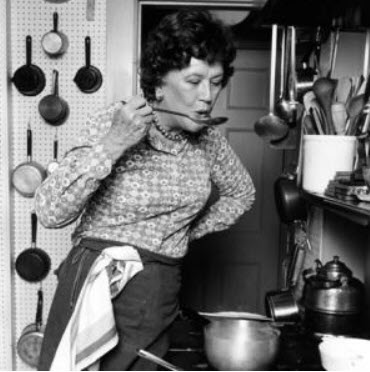 Though she was from a privileged background (her mother was heir to the Weston Paper Company of Massachusetts) and was well-educated, she still didn’t know how to find her purpose in life.
Though she was from a privileged background (her mother was heir to the Weston Paper Company of Massachusetts) and was well-educated, she still didn’t know how to find her purpose in life.
But Child barely showed any special interests other than a vague ambition of becoming a writer. In her diary, she wrote, “I am sadly an ordinary person…with talents I do not use [6].
In Paul Child, a fellow OSS officer, and a fellow spy, she had met her match. She did show some natural culinary talent early. Paul wrote to his twin brother, Charlie, “Julia never ‘puts on an act’, or creates a scene…She frankly likes to eat and use her senses and has an unusually keen nose.” [6]
(Hummmm….Does “liking to eat” predispose someone to cooking fame? I’m all in.)
These traits would hold her in good stead for her second career.
After the couple married, they moved to Paris, France, where her husband was assigned to the U.S. Information Agency in 1948.
It was during this military transfer to France that she became enamored with French cooking.
She was 40 Before She Found Her Passion and Purpose
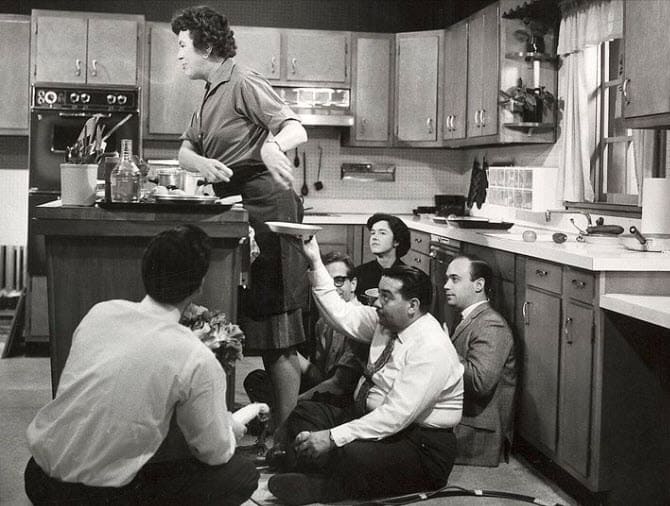 “Really, the more I cook the more I like to cook. To think it has taken me 40 years to find my true passion [cat and husband excepted],” she wrote to her sister-in-law. Her cookbook Mastering the Art of French Cooking was finally published in 1961[7] The rest is now history.
“Really, the more I cook the more I like to cook. To think it has taken me 40 years to find my true passion [cat and husband excepted],” she wrote to her sister-in-law. Her cookbook Mastering the Art of French Cooking was finally published in 1961[7] The rest is now history.
But her work at OSS changed Child in another way. Ms. Fitch explains that: “Seen from a view of posterity, her ‘boring’ job was to provide Julia Child with the discipline, the autonomous organizational skill, the patience to devise, test and perfect the recipes in her encyclopedic chef-d’oeuvre: ‘Mastering the Art of French Cooking’ (1961, 1970), on which her immortality can be said to rest [8].
Getting the book published was a grueling process that took 10 years of toiling in the kitchen for new recipes and rewriting and editing the book’s manuscript before it was finally picked up by a major publisher. It’s good she had developed patience, discipline, and organizational skills in an earlier career.
Julia’s Real Talent Was Teaching What She Knew
Julia wasn’t just skilled in an actual talent, she also knew how to teach it. And that was her real talent.
The Childs returned to the United States in the 1960s and settled in Cambridge, Massachusetts. Based on her book, television executives offered her the career opportunity to host a cooking show, The French Chef. She didn’t have the conventional requirements for TV in her era. She was over 6’2″, middle-aged, and not conventionally pretty. But she was authentic, had a fun personality, and had a love of her craft. These traits brought her national and international fame. Ultimately, winning a Peabody and Emmy Award for the program. Julia Child https://buff.ly/2Jz4Kv2
She continued to publish books and hosted several other television series. She went on to publish several more cookbooks, including a second volume of Mastering the Art of French Cooking. She also hosted several other television series, including Cooking with Master Chefs and Julia Child & Jacques Pépin Cooking at Home, for which she won a Daytime Emmy Award.
She established organizations to inspire others to cook and was awarded honorary doctorate degrees from Harvard and Brown. Her kitchen was donated to the Smithsonian National Museum of American History.
She established organizations to inspire others to share her love of food and to expand people’s awareness of cooking. She co-founded the American Institute of Wine and Food in 1981 and created the Julia Child Foundation for Gastronomy and Culinary Arts in 1995. For her work, she was awarded honorary doctorate degrees from numerous schools, including Harvard University and Brown University.
Child died on August 13, 2004, having left a legacy of culinary art and education. Her kitchen, made famous by her cooking programs, was donated to the Smithsonian National Museum of American History. By visiting the Smithsonian museum, thousands of people now peek into Child’s kitchen each year. The US Postal Service marked Child’s achievements when they included her in the 2014 “Celebrity Chefs Forever” stamp series.
4. Francis Crick’s Second Career Was Bigger Than His First Career
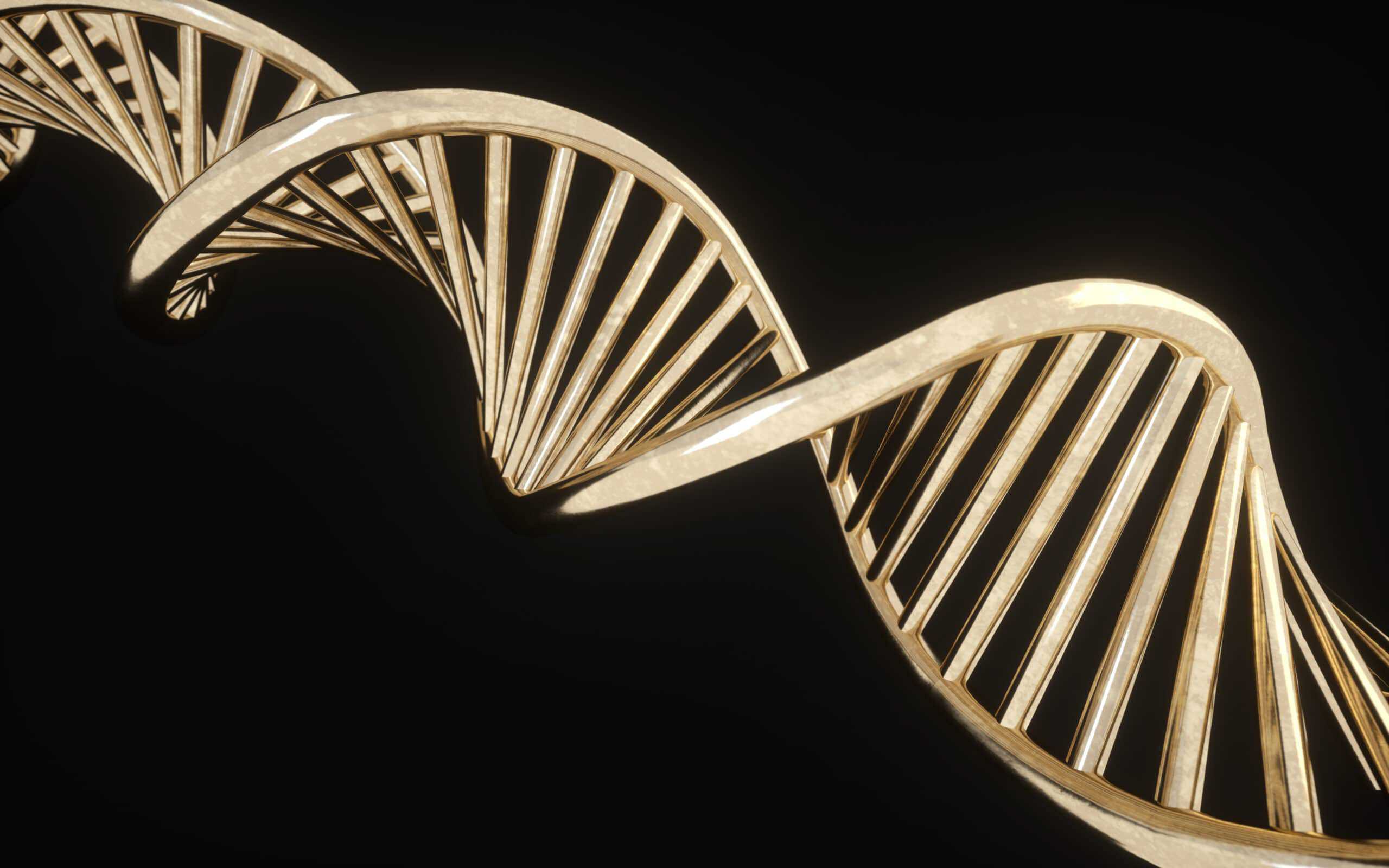
Francis Crick, a name you are no doubt familiar with, was a brilliant English physicist, turned biologist. During WWII, he was a code breaker and astutely translated that knowledge into his next niche fit—with world-changing results.
He said the DNA molecule was exactly like an alphabet in a written language or digital characters in a machine code [9]. He went on to break the Ultimate Code: the structure of the DNA molecule. He directly ascribed his DNA success to his prior code-breaking in the military. He translated the knowledge of one environment (the military) to the other (civilian), very successfully adapting Fit.
All of these career examples had very successful second careers. One was forced into a second career because his first was failing (Dr. Doyle), Ray Kroc created a second career by seeing an opportunity, Julia created a second career, almost ten years after discovering her passion and purpose; and finally, Francis Crick applied direct knowledge from his first career to his second career. All of them didn’t hit their zenith in the first round. But they certainly nailed it in the second career.
References:
1 The Language Journal: 10 Most Translated Literary Works Aside from the Bible and the Qu’ran. http://buff.ly/1AdDyWp
2 Itzkoff, D. (2010, Jan. 18). For the Heirs to Holmes, a Tangled Web
More. NY Times, https://buff.ly/3TlI83d
3 Forensic Science: The Crimefighter’s Weapon The history of crime detection, from the Sherlock Holmes-style examination of physical evidence to today’s DNA testing (2011). In Modern Marvels: History Channel.
4 Doyle, A. C. (1892). The Adventures Of Sherlock Holmes.
5 Gaylord, C. (2012, August 15). Julia Child was a spy. Was she any good at it? . Christian Science Monitor, https://buff.ly/3innbAZ
6 Biography of Julia Child. American Masters. PBS.
7 Ishak, N. (2024). Before Becoming A Beloved Celebrity Chef, Julia Child Worked As A World War 2 Spy ATI https://buff.ly/31vm77q.
8 Fitch, R. (2008, Aug. 19). Julia Child: The OSS Years. Wall Street Journal, https://on.wsj.com/3x1Oldn
9 Stephen Meyer, Author Signature of the Cell (2009). In Book C-Span 2 TV.

